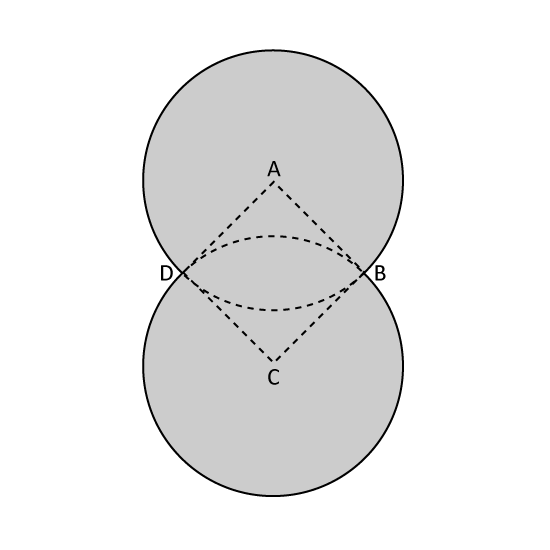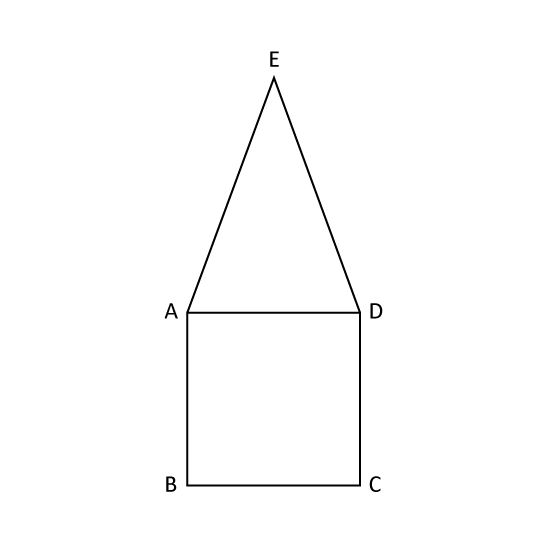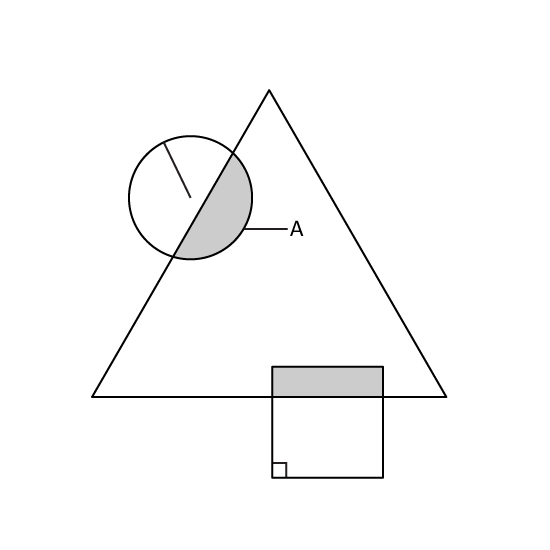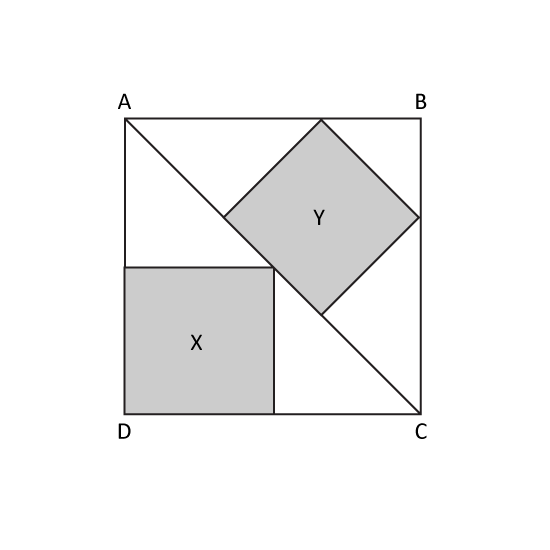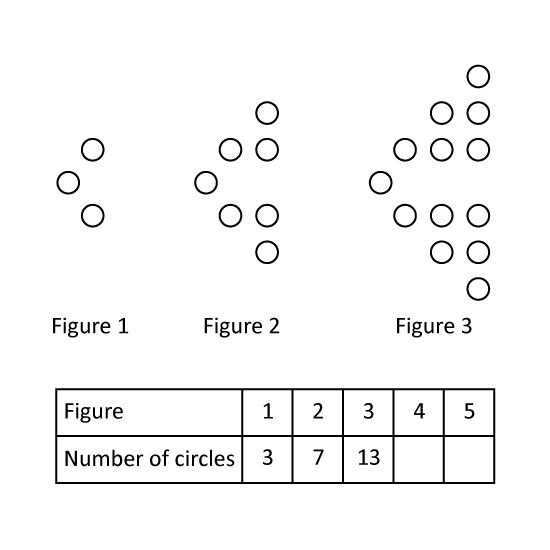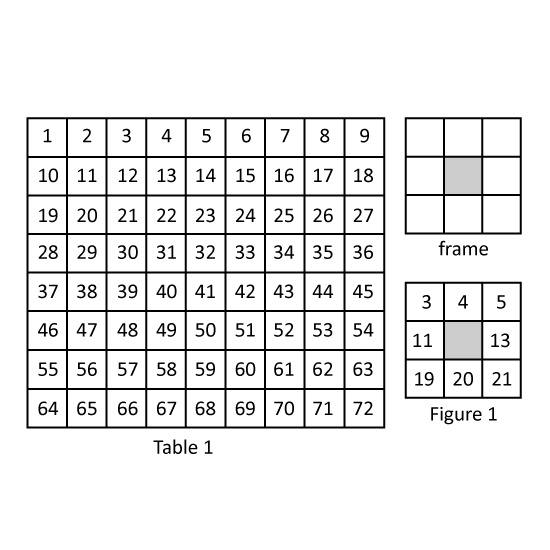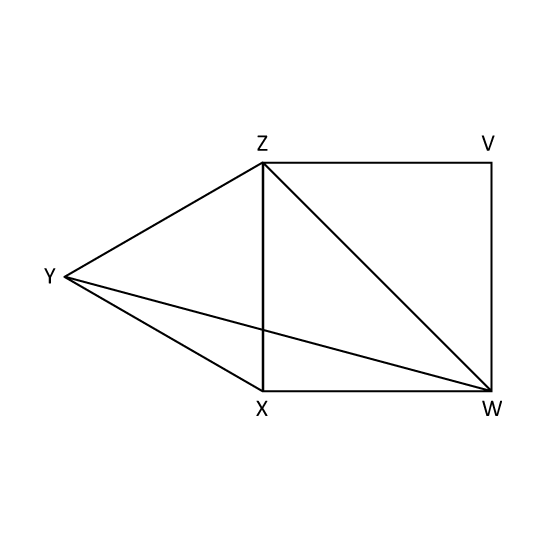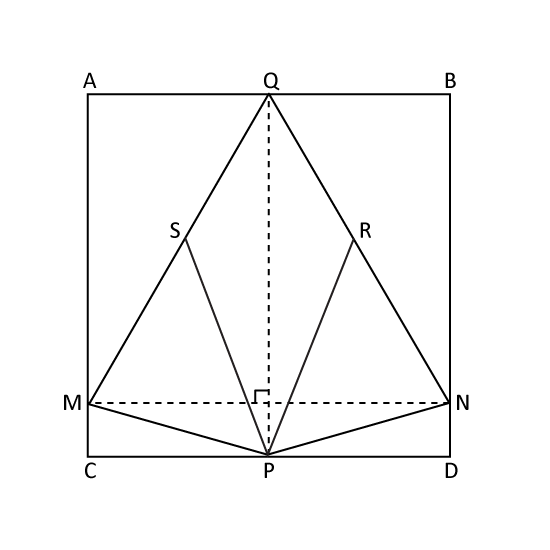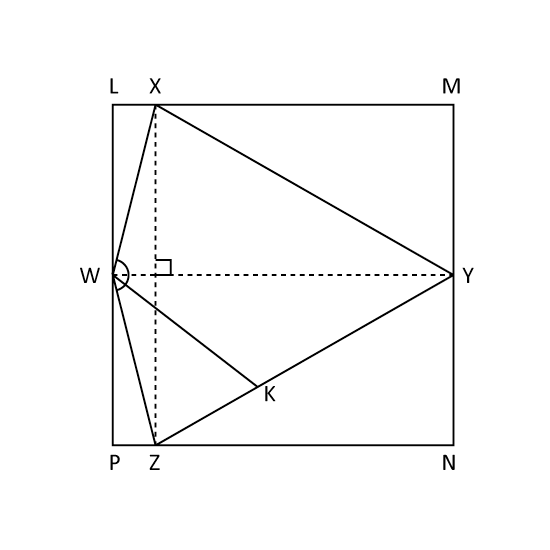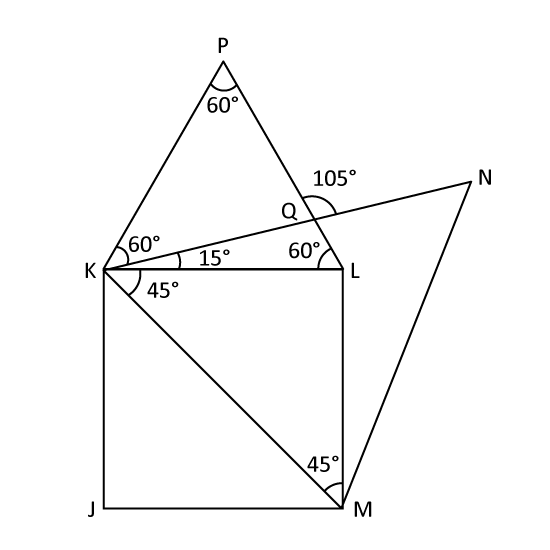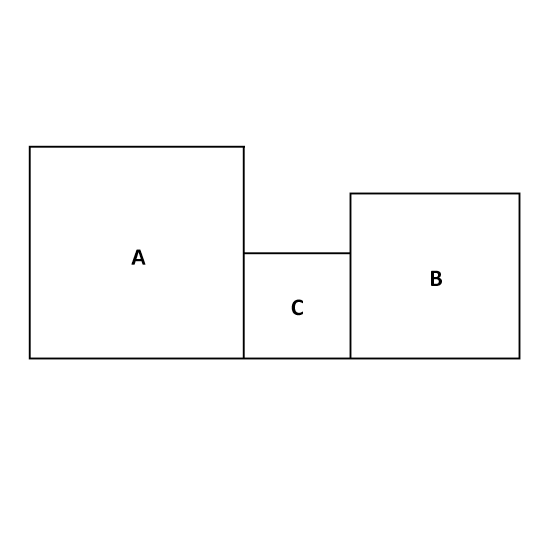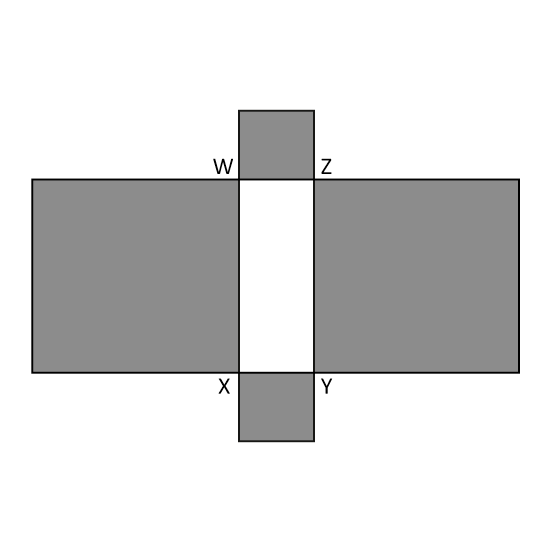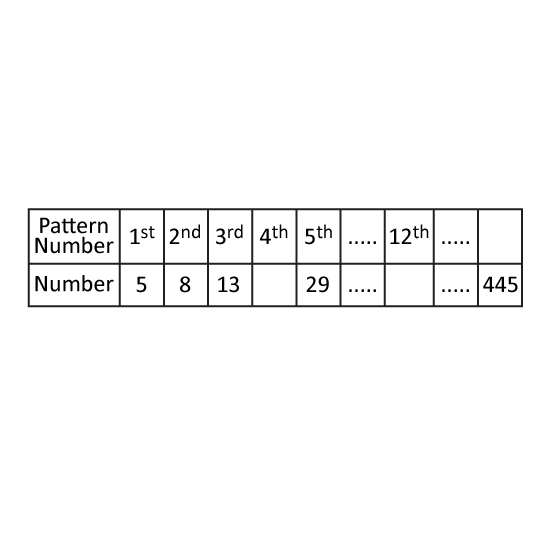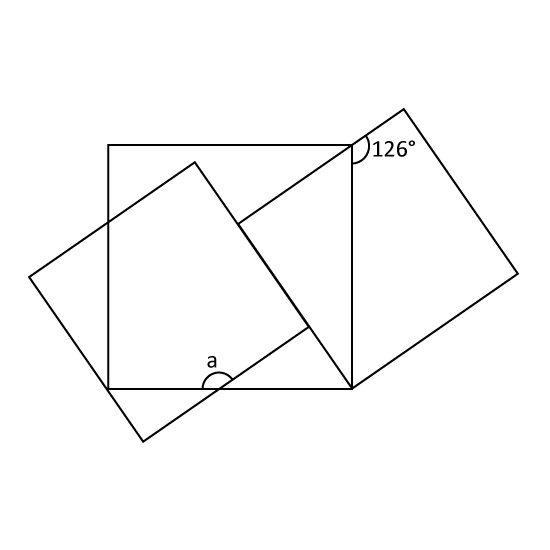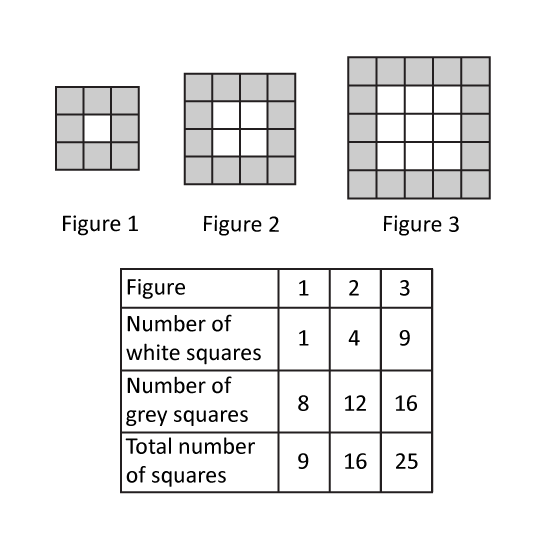Level 2 PSLE
The shaded figure is formed by two identical circles with centres at A and C. ABCD is a square and the length of AB is 7 cm. Find the perimeter of the shaded figure. (Take π = 227)
Level 2 PSLE
The shaded figure is formed by two identical circles with centres at A and C. ABCD is a square and the length of AB is 7 cm. Find the perimeter of the shaded figure. (Take π = 227)
Image in this question is not available.
Level 3
A tank with a square base area of 121 cm2 is 60% filled with water. If 4 pails of water are poured into the tank, 756 cm3 of water would overflow. If 3 pails of water are poured into the tank, 128 cm3 of water would overflow. What is the height of the tank ? Give the answer to one decimal place.
3 m
Image in this question is not available.
Level 3 PSLE
The perimeter of figure ABCDE is (10w + 14) cm. The perimeter of square ABCD is 20 cm.
- Find the perimeter of triangle ADE in terms of w.
- The perimeter of figure ABCDE is 44 cm. What is the value of w?
Level 3 PSLE
The perimeter of figure ABCDE is (10w + 14) cm. The perimeter of square ABCD is 20 cm.
- Find the perimeter of triangle ADE in terms of w.
- The perimeter of figure ABCDE is 44 cm. What is the value of w?
Image in this question is not available.
Level 3
The figure is made up of a circle, a triangle and a square of sides 8 cm. The radius of the circle is 7 cm. The ratio of the area of the circle to the shaded area of the circle is 7 : 3. The ratio of the area of the square to the area of the triangle is 1 : 4. Given that 14 of the square is shaded, what is the total area of the unshaded figure?
(Take π = 227)
Level 3
The figure is made up of a circle, a triangle and a square of sides 8 cm. The radius of the circle is 7 cm. The ratio of the area of the circle to the shaded area of the circle is 7 : 3. The ratio of the area of the square to the area of the triangle is 1 : 4. Given that 14 of the square is shaded, what is the total area of the unshaded figure?
(Take π = 227)
Image in this question is not available.
Level 3 PSLE
ABCD is a square. The shaded parts X and Y are two squares with different areas. All the corners of squares X and Y lie either on the sides of square ABCD or on the line AC. If the area of the square is 360 cm2. Find the shaded area.
Level 3 PSLE
ABCD is a square. The shaded parts X and Y are two squares with different areas. All the corners of squares X and Y lie either on the sides of square ABCD or on the line AC. If the area of the square is 360 cm2. Find the shaded area.
Image in this question is not available.
Level 3
The diagram shows the pattern for the number of circles.
- How many circles will Pattern 4 contain?
- How many circles will Pattern 30 contain?
- Which pattern contains 421 circles?
Level 3
The diagram shows the pattern for the number of circles.
- How many circles will Pattern 4 contain?
- How many circles will Pattern 30 contain?
- Which pattern contains 421 circles?
Image in this question is not available.
Level 3 PSLE
Table 1 consists of numbers from 1 to 72. Kenny and Lionel are given a plastic frame that covers exactly 9 squares of Table 1 with the centre square covered.
- Kenny puts the frame on the 9 squares shown in Figure 1. What is the average of the 8 numbers that can be seen in the frame?
- Lionel puts the frame on some other 9 squares. The sum of the 8 numbers that can be seen in the frame is 320. What is the smallest number that can be seen in the frame?
Level 3 PSLE
Table 1 consists of numbers from 1 to 72. Kenny and Lionel are given a plastic frame that covers exactly 9 squares of Table 1 with the centre square covered.
- Kenny puts the frame on the 9 squares shown in Figure 1. What is the average of the 8 numbers that can be seen in the frame?
- Lionel puts the frame on some other 9 squares. The sum of the 8 numbers that can be seen in the frame is 320. What is the smallest number that can be seen in the frame?
Image in this question is not available.
Level 3
ABCD is a square. QPC and BPD are straight lines. BA = BQ and ∠PBQ = 13°. Find
- ∠BAQ
- ∠DCQ
.
Level 3
ABCD is a square. QPC and BPD are straight lines. BA = BQ and ∠PBQ = 13°. Find
- ∠BAQ
- ∠DCQ
.
Image in this question is not available.
Level 3 PSLE
In the figure, WXZV is a square, XY = XW and XYZ is an equilateral triangle. Find ∠YWZ.
Level 3 PSLE
In the figure, WXZV is a square, XY = XW and XYZ is an equilateral triangle. Find ∠YWZ.
Image in this question is not available.
Level 3
In the figure, ABDC is a square and QM = QP = QN. Given that RP = PS, RPN = 50° and MN is parallel to AB and it is perpendicular to PQ. Find ∠RPS.
Level 3
In the figure, ABDC is a square and QM = QP = QN. Given that RP = PS, RPN = 50° and MN is parallel to AB and it is perpendicular to PQ. Find ∠RPS.
Image in this question is not available.
Level 3 PSLE
In the diagram, LMNP is a square and YX = YW = YZ. XZ is parallel to LP and it is perpendicular to WY. If ∠XWK is 105°, find ∠KWZ.
Level 3 PSLE
In the diagram, LMNP is a square and YX = YW = YZ. XZ is parallel to LP and it is perpendicular to WY. If ∠XWK is 105°, find ∠KWZ.
Image in this question is not available.
Level 3 PSLE
In the figure, QRST is a square and QPT is an equilateral triangle. Given that USV is 12°, find ∠QSU.
Level 3 PSLE
In the figure, QRST is a square and QPT is an equilateral triangle. Given that USV is 12°, find ∠QSU.
Image in this question is not available.
Level 3
In the figure, not drawn to scale, JKLM is a square. PKL is an equilateral triangle. What is ∠PQN?
Level 3
In the figure, not drawn to scale, JKLM is a square. PKL is an equilateral triangle. What is ∠PQN?
Image in this question is not available.
Level 3
The perimeter of the figure formed by 3 squares, A, B and C, is 54 cm. The length of Square C is 12 the length of Square B. The length of Square A is twice the length of Square B. Find the area of Square A.
Level 3
The perimeter of the figure formed by 3 squares, A, B and C, is 54 cm. The length of Square C is 12 the length of Square B. The length of Square A is twice the length of Square B. Find the area of Square A.
Image in this question is not available.
Level 3
In the figure, the unshaded rectangle WXYZ has a perimeter of 20 cm. A square is constructed on each of its sides. If the total area of the squares is 80 cm2, find the area of the unshaded rectangle.
Level 3
In the figure, the unshaded rectangle WXYZ has a perimeter of 20 cm. A square is constructed on each of its sides. If the total area of the squares is 80 cm2, find the area of the unshaded rectangle.
Image in this question is not available.
Level 3
Rectangle WXYZ is made up of an unshaded rectangle, an unshaded square and two shaded rectangles. The area of the square is 25 cm2 and the perimeter of the unshaded rectangle is 78 cm. What is the total area of the 2 shaded rectangles?
Level 3
Rectangle WXYZ is made up of an unshaded rectangle, an unshaded square and two shaded rectangles. The area of the square is 25 cm2 and the perimeter of the unshaded rectangle is 78 cm. What is the total area of the 2 shaded rectangles?
Image in this question is not available.
Level 3
Study the number pattern carefully.
- What is the missing number in the 5th pattern?
- What is the missing number in the 32th pattern?
- If this number pattern goes on, which pattern number will give you 445?
Level 3
Study the number pattern carefully.
- What is the missing number in the 5th pattern?
- What is the missing number in the 32th pattern?
- If this number pattern goes on, which pattern number will give you 445?
Image in this question is not available.
Level 3
May added a certain number of white squares round a grey square and then a certain number of grey squares round the white squares and she continued adding more grey and white squares round the diagram in each pattern as shown.
- How many grey squares did she need if the most outer layer had 11 squares on each side?
- How many squares are there in the Figure 11?
Level 3
May added a certain number of white squares round a grey square and then a certain number of grey squares round the white squares and she continued adding more grey and white squares round the diagram in each pattern as shown.
- How many grey squares did she need if the most outer layer had 11 squares on each side?
- How many squares are there in the Figure 11?
Image in this question is not available.
Level 3 PSLE
The figure is made up of 3 squares. Find ∠a.
Level 3 PSLE
The figure is made up of 3 squares. Find ∠a.
Image in this question is not available.
Level 3
A pattern is made by putting shaded squares of unit length around a white square of similar unit length. He then continues to make patterns as shown in Figure 2 and Figure 3.
- Which figure uses 100 white squares?
- Find the number of shaded squares in Figure 30.
- Find the total number of squares in Figure 60.
Level 3
A pattern is made by putting shaded squares of unit length around a white square of similar unit length. He then continues to make patterns as shown in Figure 2 and Figure 3.
- Which figure uses 100 white squares?
- Find the number of shaded squares in Figure 30.
- Find the total number of squares in Figure 60.
Image in this question is not available.
